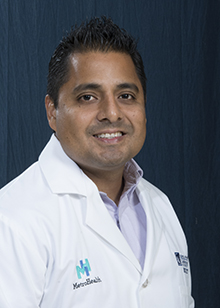Session and Tracks
Metastasis, or metastatic disease, refers to the spread of cancer cells from a primary site to distant organs or tissues, marking a critical stage in cancer progression and complicating treatment outcomes. Oncoviruses cancer-causing viruses such as Human Papillomavirus (HPV) and Epstein-Barr Virus (EBV) play a significant role in oncogenesis by integrating viral genes into host DNA and disrupting normal cellular regulation. Carcinogenesis, also known as oncogenesis or tumorigenesis, is the multistep transformation of normal cells into malignant ones, driven by genetic and epigenetic alterations. A key mechanism in this transformation is mutagenesis, the process through which stable genetic mutations are introduced, either spontaneously or via exposure to external mutagens like chemicals or radiation. Apoptosis, or programmed cell death, mediated by caspases, normally removes damaged or unneeded cells; however, its disruption can lead to uncontrolled cell survival and tumor development. Together, these interrelated processes form the foundation of modern cancer biology and remain central to diagnostics, prevention, and the development of targeted therapies.
Clinical Pathology is a vital medical specialty focused on the diagnosis of diseases through laboratory analysis of bodily fluids such as blood, urine, and cerebrospinal fluid. As one of the main branches of pathology, it plays a critical role in supporting patient care by providing essential diagnostic insights that inform clinical decision-making. Through biochemical, microbiological, hematological, and molecular testing, clinical pathology aids in identifying a wide range of conditions, from infections to chronic illnesses and malignancies. For instance, the recent emergence of Zika fever, caused by the Zika virus and transmitted primarily through Aedes mosquito bites, underscores the importance of clinical pathology in diagnosing and managing newly emerging infectious diseases. Additionally, clinical pathology contributes to cancer diagnostics, prognostic assessments, and toxicology testing both clinical and non-clinical. It also encompasses subfields such as neuropathology and integrates cutting-edge technologies like molecular diagnostics and personalized medicine. Globally, over 36 professional associations and 90 universities are actively engaged in clinical pathology research, with key players such as Clinical Pathology Laboratories and thousands of hospitals, particularly in the U.S., at the forefront of innovation and clinical application in this domain.
Track 3: Dermatopathology
Dermatopathology is a specialized branch of pathology and dermatology that focuses on diagnosing cutaneous (skin) diseases at both the microscopic and molecular levels. It bridges clinical dermatology with histopathology, enabling deeper insights into skin disorders by examining tissue samples through biopsies. While dermatologists can typically diagnose many skin conditions through clinical evaluation based on appearance, distribution, and behavior, certain cases require tissue examination to confirm or clarify the diagnosis. This involves analysing the histological architecture of skin biopsies and may include advanced diagnostic tools such as immunofluorescence, immunohistochemistry, electron microscopy, flow cytometry, and molecular pathology techniques. Dermatopathologists are often dermatologists with additional training in pathology, allowing them to combine clinical insights with microscopic evaluation for more accurate and comprehensive diagnoses of complex or ambiguous skin conditions.
Track 4: Cytopathology and Histopathology
Cytopathology is a specialized diagnostic technique that focuses on the examination of individual cells extracted from various body sites to identify diseases and abnormalities. It plays a crucial role in detecting infections, inflammatory conditions, and malignancies. One of the most renowned cytopathology tests is the Pap smear, which was developed over 50 years ago and remains one of the most effective and widely used screening tools for cervical cancer and its precancerous changes. Alongside cytopathology, histopathology or cellular pathology examines tissue samples (histology) and cells (cytology) under the microscope, often including post-mortem examinations (autopsies). Histopathologists analyze whole tissue sections to determine disease presence, progression, and severity, requiring a keen eye for detail and extensive knowledge of tissue structure and pathology. Both cytopathology and histopathology are essential for accurate disease diagnosis, guiding treatment planning and patient management across a wide range of medical conditions.
Track 5: Renal Pathology
Renal pathology, a critical subspecialty within pathology and nephrology, focuses on diagnosing kidney-related diseases through detailed analysis using light microscopy, electron microscopy, and immunofluorescence. These advanced techniques are essential for identifying specific patterns of injury and abnormalities in kidney tissues, enabling precise diagnosis and effective treatment planning. Key areas of research in renal pathology include toxic tubular necrosis, renal carcinomas, diabetic glomerulosclerosis, and lupus glomerulonephritis. The field also investigates the impact of toxins and tumors on renal function. Medical renal diseases can affect one or more compartments of the kidney including the glomeruli, tubules, interstitium, and blood vessels often requiring integrated pathological evaluation. Ongoing advancements in molecular diagnostics and tissue imaging continue to enhance the accuracy and depth of renal pathology findings, making it an essential component of modern nephrology and clinical care.
Track 6: Oral and Maxillofacial Pathology
Oral and Maxillofacial Pathology is a specialized branch of dentistry and pathology focused on diagnosing and studying diseases affecting the oral cavity, jaws, and associated structures, including the salivary glands, temporomandibular joints, facial muscles, and perioral skin. Often referred to as head and neck pathology, this discipline plays a vital role in identifying and understanding the epidemiology and etiology of various oral diseases. It involves microscopic examination of biopsy specimens, diagnosis and management of oral cancers, congenital and acquired lesions, pediatric oral pathologies, and surgical reconstruction of maxillofacial defects. The field collaborates closely with oral and maxillofacial surgery and oncology. In the United States alone, over 36 professional associations and societies support this specialty, with approximately 18,000 pathologists and 90 academic institutions contributing to its advancement. Additionally, more than 1,400 hospitals across the country integrate oral and maxillofacial pathology into patient care and research, emphasizing its critical role in modern healthcare.
Track 7: Veterinary Pathology
Veterinary Pathology is a specialized branch of pathology focused on the study, diagnosis, and understanding of diseases in animals through the examination of tissues, organs, and bodily fluids. It is broadly divided into two core disciplines: veterinary anatomical pathology, which involves the gross and microscopic study of structural changes in animal tissues, and veterinary clinical pathology, which centers on diagnosing diseases through laboratory evaluation of blood, urine, and other bodily fluids. Veterinary pathology plays a vital role in diagnosing a wide range of animal diseases, including parasitic infections and systemic disorders, thereby supporting animal health, public health, and biomedical research. The field also bridges the gap between basic and clinical sciences in veterinary medicine. Key organizations such as the American College of Veterinary Pathologists (ACVP) and the European College of Veterinary Pathologists (ECVP) lead research, certification, and funding efforts globally. In the United States, around 10 major associations and over 60 universities are actively involved in education and research in veterinary pathology, highlighting its growing importance in both clinical practice and comparative medical studies.
Track 8: Molecular Pathology
Molecular Pathology is a rapidly advancing discipline within the field of pathology that focuses on the study and diagnosis of disease through the examination of molecules, such as DNA, RNA, and proteins, within tissues, organs, and bodily fluids. This field bridges traditional pathology with molecular biology and plays a crucial role in enhancing precision medicine. By analysing molecular and genetic markers, molecular pathology allows for more accurate, targeted diagnoses especially in complex diseases like cancer by combining traditional histopathological findings with molecular-level insights. This multidisciplinary approach is instrumental in drug development, personalized treatment strategies, and disease monitoring. Molecular pathology is essential in understanding disease mechanisms at the subcellular level, leading to breakthroughs in therapeutic interventions and predictive diagnostics. In the United States, the Association of Molecular Pathology (AMP) leads the efforts in research, education, and policy. Currently, around 78 universities are engaged in molecular pathology research, and numerous healthcare institutions and biotechnology firms are integrating molecular diagnostics into clinical practice. The National Institutes of Health (NIH) has invested approximately $197,088 in molecular pathology research, underscoring its growing significance in modern healthcare.
Track 9: Digital Pathology and e-Pathology
e-Pathology is defining the new paradigm of anatomic pathology. Telepathology image-based information sent to the far distance by telecommunication technology for research analysis in both academic and business side. e-Pathology is a complete scan of a microscopic glass slide and the viewing of the slide on a computer monitor through a digital software system. The researches in pathology look beyond the Advancements in diagnosis pathology by using the automated image analysis. The global digital pathology market, valued at $1.98 billion in 2012, is estimated to reach $5.7 billion by 2020. The Association of Digital Pathology is the main Association in Digital pathology field and conducts annual Pathology meetings. Ventana, Leica, Philips, GE Health care are the main competitors for Digital Pathology software updates and new releases.
Track 10: Surgical Pathology
Surgical pathology is a vital branch of pathology that involves the examination of tissues removed from living patients during surgery to aid in the diagnosis of disease and guide treatment decisions. This discipline plays a crucial role in identifying various conditions, particularly malignancies, by evaluating both gross anatomical features and microscopic characteristics of excised tissues. Surgical pathologists often provide intraoperative consultations, second opinions, and diagnostic clarity across a broad range of organ systems and clinical specialties. For example, in breast cancer surgeries, a surgical pathologist’s assessment of tissue samples can help determine whether lymph node removal is necessary. The process typically includes a macroscopic (naked-eye) examination followed by microscopic analysis to detect abnormalities. Surgical pathology significantly influences the clinical decision-making process and contributes to personalized treatment planning. In the United States, approximately 92 universities are engaged in pathology research, with leading institutions such as Stanford University School of Medicine, Johns Hopkins University, Duke University, and Washington University recognized for their contributions to surgical pathology. Notably, the National Cancer Institute has allocated over $1.26 million to support ongoing research in this critical field.
Track 11: Breast Pathology
Breast cancer is broadly categorized into two primary types: carcinomas and sarcomas. Carcinomas originate from the epithelial cells of the breast, which line the lobules and terminal ducts and are responsible for milk production under normal physiological conditions. These carcinomas represent the vast majority of breast cancer cases, including subtypes like ductal carcinoma in situ (DCIS) and invasive ductal or lobular carcinoma. On the other hand, sarcomas are rare malignancies that develop from the stromal or connective tissue components of the breast, such as myofibroblasts and vascular cells. Examples of these cancers include phyllodes tumors and angiosarcomas, and they make up less than 1% of all primary breast cancers. While carcinomas are the most commonly encountered in clinical practice and research, sarcomas require distinct diagnostic and therapeutic approaches due to their unique cellular origin and behavior.
Track 12: Hematopathology
Hematopathology is a specialized branch of pathology dedicated to the study and diagnosis of diseases affecting hematopoietic (blood-forming) cells and hematological disorders. It plays a critical role in identifying and managing conditions such as acute and chronic leukemias, myelodysplastic syndromes, myeloproliferative disorders, various types of anemia, and benign bone marrow and lymph node conditions. Additionally, hematopathologists diagnose and monitor lymphoid malignancies such as B-cell and T-cell lymphomas and cutaneous lymphomas. Diagnostic techniques in this field often involve advanced molecular and immunophenotypic analyses to ensure precise classification and targeted therapy. In the United States, approximately 89 universities are actively involved in hematopathology research. Leading institutions in this field include the University of Texas MD Anderson Cancer Centre, Stanford University School of Medicine, Yale University, and Washington University. Supporting this vital research area, the National Cancer Institute (NCI) has allocated $540,054 in funding to further innovations and breakthroughs in hematopathology.
Track 13: Microbial Pathology
A pathogen is a microorganism capable of causing disease in a host, including plants, animals, or insects. The pathogenicity of an organism refers to its ability to induce disease, which is expressed through its virulence the degree or intensity of its disease-causing potential. Virulence factors are specific genetic, biochemical, or structural components of the pathogen that contribute to its ability to infect and damage the host. These may include toxins, surface proteins that aid in adhesion to host cells, enzymes that facilitate tissue invasion, or mechanisms that evade the host's immune response. Understanding these elements is crucial for developing strategies to prevent, diagnose, and treat infectious diseases.
Track 14: Gastrointestinal and Liver Pathology
Gastrointestinal pathology, which encompasses the study of diseases of the digestive tract including the liver, gallbladder, and pancreas, is a recognized subspecialty of surgical pathology. This field involves the detailed examination and diagnosis of diseases through histopathological analysis of gastrointestinal endoscopic biopsies and surgical resections. Specialized training, often through dedicated fellowships or significant clinical experience, equips pathologists to accurately interpret complex GI specimens. Liver diseases, in particular, may arise from various mechanisms, with viral infections being a major contributor. Conditions such as Hepatitis B and Hepatitis C are of global concern and can be vertically transmitted at birth through exposure to infected maternal blood. The field of gastrointestinal pathology plays a critical role in detecting, diagnosing, and guiding the management of these and other related disorders, thereby significantly influencing patient outcomes.
Track 15: Anatomical Pathology
Anatomical pathology is a core specialty within pathology that focuses on the morphological examination of diseases through tissue and organ-based assessments, both at the macroscopic and microscopic levels. It plays a critical role in diagnosing a wide range of conditions, including cancer, infections, and degenerative disorders. Recent advancements in the field include innovations such as radiofrequency identification and specimen tracking, advanced biosafety protocols, multi-modal diagnostic techniques, and specialized research into the anatomical pathology of sexually transmitted diseases. In the United States alone, there are 36 professional associations, over 18,000 practicing pathologists, and 90 academic institutions dedicated to this field. The industry is also supported by 630 companies and 3,400 hospitals, reflecting its vast infrastructure. The anatomical pathology market is experiencing steady growth, with revenue projected to reach $74.65 billion by 2020, growing at a CAGR of 5.34% between 2020 and 2025, while the broader diagnostic medicine market continues to expand at an annual rate of 5–7%.
Track 16: Neuropathology and Neurodegenerative Disorders
This session explores the pathological basis of central and peripheral nervous system diseases.
Key topics include Alzheimer’s, Parkinson’s, multiple sclerosis, gliomas, and prion diseases.
Special focus will be given to CNS infections and the emerging neuropathology of long-COVID.
Advancements in brain biopsy techniques and postmortem diagnostics will be highlighted.
Molecular markers, proteinopathies, and neurodegenerative classifications will be discussed.
Novel imaging-pathology correlations for early diagnosis and treatment response will be reviewed.
Immune-mediated encephalitis and neuroinflammatory mechanisms are key topics.
The session bridges research with clinical application in neurology and neuropathology.
Ideal for clinicians, pathologists, and neuroscientists seeking diagnostic and translational insights.
Track 17: Cardiovascular Pathology and Vascular Biology
The Cardiovascular Pathology and Vascular Biology session provides a comprehensive overview of both structural and molecular abnormalities affecting the heart and vascular system. It will cover a range of conditions, including atherosclerosis, myocarditis, vasculitis, cardiomyopathies, and congenital heart defects. Emphasis will be placed on updated diagnostic criteria and classification systems, along with the interpretation of critical autopsy findings in cases such as myocardial infarction and sudden cardiac death. The session will also explore advances in molecular pathology, with a focus on vascular injury, thrombosis mechanisms, and endothelial dysfunction. Attendees will gain insights into the application of emerging biomarkers and diagnostic assays that enhance clinical decision-making. Multidisciplinary case discussions will integrate histopathology with advanced imaging, highlighting the importance of collaborative approaches. Special attention will be given to immune-mediated and inflammatory vascular diseases, promoting dialogue across pathology, cardiology, and vascular biology. This session is designed to equip professionals with the latest tools, perspectives, and translational knowledge in cardiovascular diagnostics.
Track 18: Pulmonary and Thoracic Pathology
The Pulmonary and Thoracic Pathology session focuses on the comprehensive study of both neoplastic and non-neoplastic conditions affecting the lungs and pleura. Key topics include interstitial lung diseases, occupational and environmental lung disorders, pulmonary infections, and thoracic malignancies such as mesothelioma and lung carcinomas. The session will explore recent advances in diagnostic criteria, molecular classification, and the role of minimally invasive techniques in tissue sampling. Emphasis will be placed on the application of digital pathology and high-resolution imaging in evaluating complex cases. Special attention will be given to rare pulmonary entities and the diagnostic challenges they present in small biopsies. Presentations will incorporate real-world case studies, multidisciplinary perspectives, and updates on evolving WHO classifications. The role of pathology in guiding targeted therapies and immunotherapies will also be discussed. This session aims to equip pathologists, pulmonologists, and oncologists with advanced diagnostic insights and practical approaches to thoracic pathology.
Track 19: Endocrine and Reproductive Pathology
The Endocrine and Reproductive Pathology session offers a detailed exploration of the diagnostic complexities associated with endocrine glands and reproductive organs. Topics will include thyroid, adrenal, pituitary, ovarian, endometrial, and testicular pathology, with a focus on integrating histopathological findings with molecular insights. Special attention will be given to the evolving molecular classification of thyroid cancers and their clinical implications. The session will also cover the pathogenesis and progression of endometrial hyperplasia to carcinoma, as well as key diagnostic features of ovarian and testicular neoplasms. Recent advancements in immunohistochemistry and molecular assays will be highlighted to improve diagnostic precision. Discussions will explore the clinical relevance of emerging biomarkers in risk stratification and therapy guidance. Participants will benefit from case-based reviews that bridge traditional pathology with modern precision medicine. Emphasis will be placed on personalized treatment approaches informed by integrated pathology reports. This session is designed for pathologists, oncologists, endocrinologists, and gynecologic specialists aiming to stay current with advances in endocrine and reproductive disease diagnostics.
Track 20: Pediatric and Perinatal Pathology
The Pediatric and Perinatal Pathology session focuses on the unique spectrum of diseases affecting neonates, infants, and children, offering critical insights into both congenital and acquired conditions. Key topics include congenital anomalies, genetic syndromes, pediatric tumors, perinatal infections, and disorders of growth and development. The session will also cover placental pathology as a window into fetal well-being and maternal-fetal interactions. Advances in prenatal imaging, next-generation sequencing, and molecular diagnostics will be explored for their impact on early detection and classification. Emphasis will be placed on the integration of developmental biology with clinical pediatric pathology to enhance diagnostic accuracy. Updates in fetal and neonatal autopsy protocols will be presented, highlighting their relevance in uncovering causes of perinatal mortality. Case-based discussions will illustrate complex diagnostic challenges and multidisciplinary collaboration. This session is essential for pediatric pathologists, neonatologists, obstetricians, and geneticists seeking to advance their expertise in perinatal and pediatric diagnostics.
Digital Pathology Market
Industry Trends and Global Forecasts, till 2035 - Distribution by Type of Neural Network (Artificial Neural Network, Convolutional Neural Network, Fully Convolutional Network, Recurrent Neural Network and Other Neural Network), Type of Assay (ER Assay, HER2 Assay, KI67 Assay, PR Assay, and Other Type of Assay) Type of End-User (Academic Institutions, Hospitals/ Healthcare Institution, Laboratories / Diagnostic Institution, Research Institutes and Other End-Users), Area of Application (Diagnostics, Research and Other Areas of Application), Target Disease Indication (Breast Cancer, Colorectal Cancer, Cervical Cancer, Gastrointestinal Cancer, Lung Cancer, Prostate Cancer and Other Indications) And Key Geographies (North America, Europe, Asia Pacific, Latin America, Middle East and North Africa and Rest of the World)
Digital Pathology Market Overview
The global digital pathology market size is estimated to be worth USD 0.96 billion in 2026 and is anticipated to grow at a CAGR of 8.30% during the forecast period.
Pathology, a cornerstone of medical science, plays a critical role in the detection, diagnosis, and understanding of diseases. Beyond identifying illness, it enables comprehensive examination of the underlying nature, fluid dynamics, and root causes of various conditions. In recent years, digital pathology has revolutionized this field by transforming traditional glass slides into high-resolution digital slides. These are analyzed through advanced imaging software and AI-integrated virtual microscopy tools, allowing pathologists to interpret tissue samples with greater precision, speed, and efficiency.
As of 2026, the digital pathology market is poised for accelerated growth, driven by the rising global burden of chronic diseases and cancer. According to the National Cancer Institute, in 2026 alone, the U.S. reported nearly 2 million new cancer cases, with breast and prostate cancers each accounting for 15%, and lung cancer being the leading cause of cancer-related deaths at 21%. This alarming rise, particularly fueled by an aging global population, is significantly increasing the demand for high-throughput, accurate, and time-sensitive diagnostic services an area where digital pathology excels.
The integration of artificial intelligence (AI) and machine learning within digital pathology platforms has further enhanced the landscape by enabling automated image analysis, improved diagnostic accuracy, and streamlined workflows. Digital pathology also fosters real-time collaboration among pathologists across geographical locations, ensures secure long-term specimen preservation, and supports rapid clinical decision-making.
The market serves a wide array of stakeholders, including hospitals, diagnostic centers, research laboratories, pharmaceutical firms, and healthcare institutions, all of which are investing heavily in digital solutions to meet evolving diagnostic needs. With such transformative technologies and broad applicability, the digital pathology sector is projected to grow at an exceptional compound annual growth rate (CAGR) over the coming years, solidifying its pivotal role in the future of precision medicine and diagnostics.
Digital Pathology Market Outlook from 2026 to 2033
The digital pathology market is experiencing a transformative growth trajectory driven by rapid technological advancements, increasing demand for accurate diagnostics, and a growing global disease burden. As of 2026, the market is entering a high-growth phase, projected to expand significantly over the next decade.
Valued at US$ 7,035.8 million in 2026, the digital pathology market is forecasted to reach an impressive US$ 24,961.8 million by 2033, growing at a robust CAGR of 13.5% during the period 2026 to 2033.
Key Market Trends and Highlights
-
Digital pathology streamlines workflow, reduces turnaround times, and minimizes errors associated with manual processes. The efficiency improvement is a strong driver for adoption.
-
Digital pathology plays a crucial role in drug discovery and research, enabling pharmaceutical companies to analyze tissue samples more effectively and efficiently.
-
The globalization of healthcare services has increased the demand for remote consultation and second opinions. Digital pathology facilitates cross-border collaborations and consultations.
-
Some governments and healthcare organizations are actively promoting the adoption of digital pathology to enhance healthcare infrastructure and improve patient outcomes.
-
The shift toward patient-centric care requires more precise diagnoses and tailored treatment plans. Digital pathology can support this trend by providing comprehensive and accurate pathology data.









